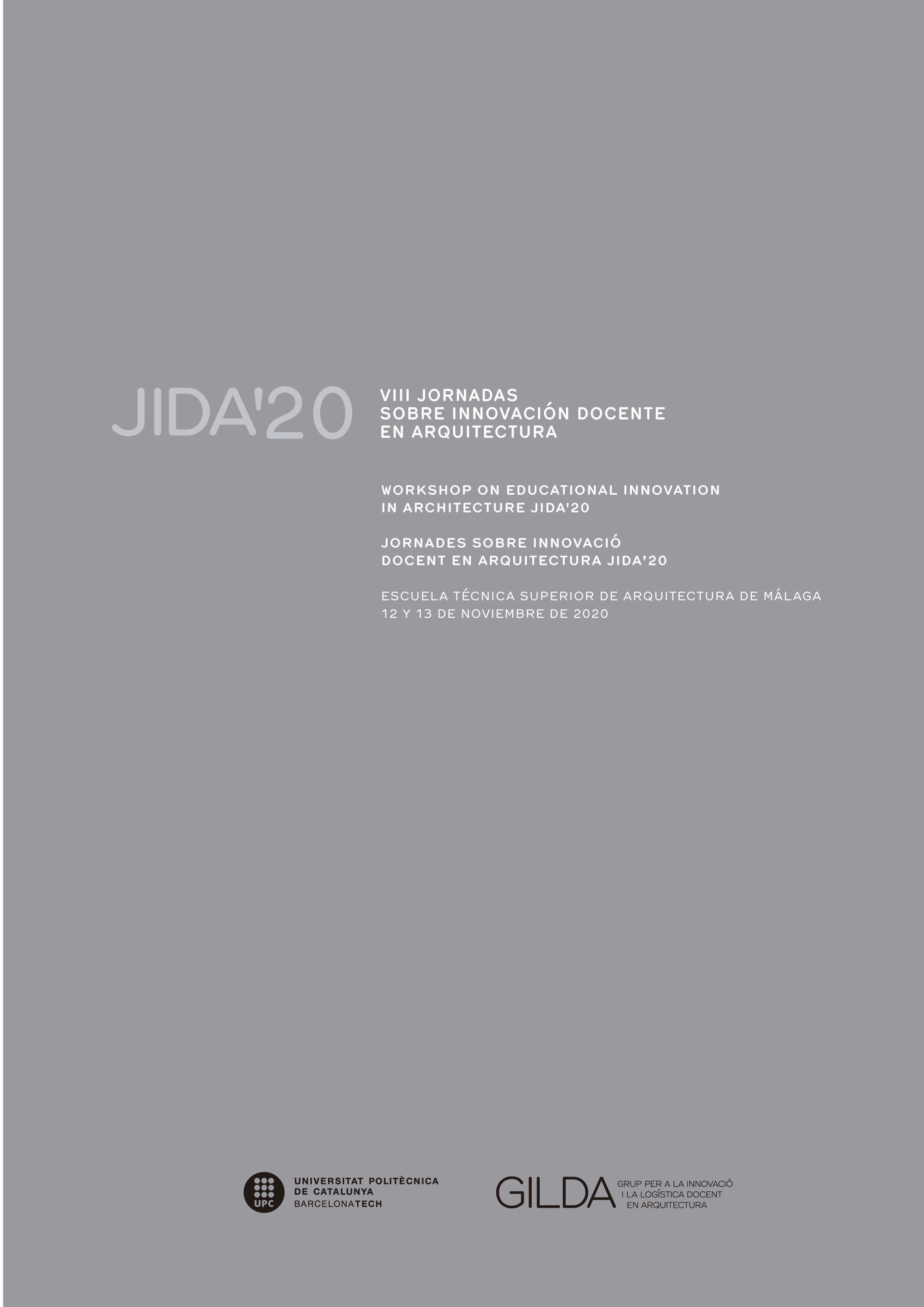Collaborative Pedagogy and Social Networks. Design in Quarantine
DOI:
https://doi.org/10.5821/jida.2020.9336Abstract
This communication, framed in the thematic proposal 'Confined teaching: remote learning', analyzes the experience of the subject Design Culture: Architecture and Exhibition, which is part of the inter-university Master's program in design advanced studies MBDesign (UPC + UB) taught in Barcelona. The health emergency and the consequent confinement —which has required non-face-to-face teaching for most of the semester calendar— has led to the exploration of alternatives in relation to pedagogical methods, modifying in turn the contents of the subject. Collaborative online work and social networks have in this case become learning channels as an alternative to the face-to-face model. The result allows the analysis of teaching qualities related to collaborative activities and the dissolution of hierarchies related to the physical learning space.
References
DAVIES, M. (2011). “Concept mapping, mind mapping and argument mapping: what are the differences and do they matter?â€. Higher education, 62(3), 279-301.
DILLENBOURG, P. (1999). “Collaborative learning: Cognitive and computational approaches. advancesâ€. Learning and instruction series. Elsevier Science, Inc., PO Box 945, Madison Square Station, New York, NY 10160-0757.
HIRSCHBERG, U.; SCHMITT, G.; KURMANN, D.; KOLAREVIC, B.; JOHNSON, B.; DONATH, D. (1999). “The 24 hour design cycle: An experiment in design collaboration over the internetâ€.
International Conference of the Association for Computer Aided Architectural Design Research In Asia, 181-190.
JIMÉNEZ-LANDI, A. (1996). La Institución Libre de Enseñanza y su ambiente: Periodo de expansión influyente (Vol. 4). Barcelona: Edicions Universitat Barcelona.
MCLOUGHLIN, C.; LEE, M. J. (2010). “Personalised and self regulated learning in the Web 2.0 era: International exemplars of innovative pedagogy using social softwareâ€. Australasian Journal of Educational Technology, 26(1), p. 28-43.
MONTESSORI, M. (1965). PedagogÃa cientÃfica. São Paulo: Flamboyant.
PRENSKY, M. R. (2010). Teaching digital natives: Partnering for real learning. Thousand Oaks: Corwin press.
GOLDENBERG, O.; WILEY, J. (2011). “Quality, conformity, and conflict: Questioning the assumptions of Osborn’s brainstorming techniqueâ€. The Journal of Problem Solving, 3(2), 5.
GREENHOW, C.; ROBELIA, B. (2009). “Old communication, new literacies: Social network sites as social learning resourcesâ€. Journal of Computer-Mediated Communication, 14(4), 1130-1161.
OSBORN, A. (1953). Author Applied Imagination: Principles & Procedures of Creative Thinking. New York: Scribner.
SIBBET, D. (2010). Visual meetings: How graphics, sticky notes and idea mapping can transform group productivity. London: John Wiley & Sons.
SMITH, B. L.; MACGREGOR, J. T. (1992). “What is collaborative learning?†Collaborative Learning: A Sourcebook for Higher Education, by Anne Goodsell, Michelle Maher, Vincent Tinto, Barbara Leigh Smith and Jean MacGregor. National Center on Postsecondary Teaching, Learning, and Assessment at Pennsylvania State University.
WOJTOWICZ, J. (1995). Virtual design studio (Vol. 1). Hong Kong: Hong Kong University Press.



















